You are here
Half a Dozen New Cord Blood Laboratories in UAE
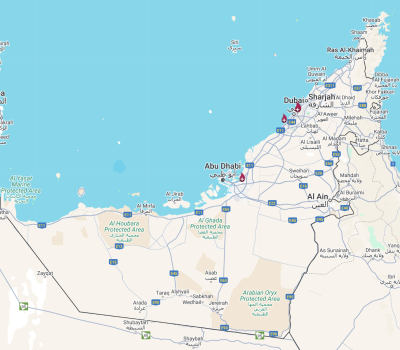 Over the course of about a year, the number of cord blood laboratories completed or under construction has jumped from two to eight in the United Arab Emirates (UAE). This proliferation of laboratories is the result of a 2020 regulation from the UAE Ministry of Health which requires that any bank which collects cord blood from births in the UAE must set up a laboratory and storage facility within the UAE1. This regulation applies at the emirate level, so that a bank with a laboratory in the emirate of Dubai cannot collect cord blood from the neighboring emirate of Abu Dhabi, 123 km (76 miles) away. Collecting cord blood from Abu Dhabi requires a bank to establish a laboratory in Abu Dhabi. Moreover, each time a bank applies for a license to establish a laboratory, they must pay the government a bond of AED 10 million (USD 2.7 million). And yet, a half dozen new cord blood laboratories have sprung up to serve the birth market in the UAE.
Over the course of about a year, the number of cord blood laboratories completed or under construction has jumped from two to eight in the United Arab Emirates (UAE). This proliferation of laboratories is the result of a 2020 regulation from the UAE Ministry of Health which requires that any bank which collects cord blood from births in the UAE must set up a laboratory and storage facility within the UAE1. This regulation applies at the emirate level, so that a bank with a laboratory in the emirate of Dubai cannot collect cord blood from the neighboring emirate of Abu Dhabi, 123 km (76 miles) away. Collecting cord blood from Abu Dhabi requires a bank to establish a laboratory in Abu Dhabi. Moreover, each time a bank applies for a license to establish a laboratory, they must pay the government a bond of AED 10 million (USD 2.7 million). And yet, a half dozen new cord blood laboratories have sprung up to serve the birth market in the UAE.
The UAE is a small Arab country on the Persian Gulf that has a land mass comparable to the US state of Maine and has a total population of 12.5 million2. Among the seven emirates that comprise UAE, the two most populous are Abu Dhabi at 3.8 million and Dubai at 3.7 million2. Emirati citizens comprise only 11.5% of the population in UAE, with the rest being foreign guest workers. The largest national group in the UAE is Indians, at 38% of the population. The foreign workers tend to be young men, so that UAE has one of the highest male-to-female population ratios in the world, with females currently comprising 31% of the population. There are about 126 thousand births per year in UAE2.
Is it crazy for so many cord blood banks to invest in the birth market of UAE? Some industry insiders say “no” and others say “yes”. The obvious attraction of operating in the UAE is that it is the world’s 6th most wealthy country when ranked by GDP per capita3. The population of the UAE has been growing steadily through an influx of foreigners; their economy is both strong and diversifying4. In theory, many families in the UAE can afford cord blood banking. In practice, we have heard that the eight banks collectively are taking in about 500 cord blood collections per month, so the penetration of banking is currently only 4% of births. Clearly more outreach is needed for this market to reach its potential. Also, the relatively high cost of family banking in the UAE does not convert to high profit margins, because fees must be paid to the hospital where the birth took place, and to the doctor that delivered the baby. Private hospitals in the UAE tend to sign exclusive agreements with one cord blood bank.
Let’s take a look at the players in the UAE cord blood market, and then return to the unique challenges and opportunities of operating in this country.
 CellSave Arabia, formerly known as Cryo-Save Arabia, was the first cord blood bank in the UAE, established in Dubai in 2006. They are still the only bank in the UAE that is accredited under the international standards of AABB. Due to their long history, CellSave Arabia is the dominant cord blood bank in the Dubai market, and they have leveraged their expertise to enter related markets. CellSave Arabia offers to expand MSC from perinatal tissues to provide clients with a master stem cell bank for future therapies. For adults, they offer adipose processing to extract MSC and peripheral blood processing to extract immune cells. CellSave Arabia has also diversified beyond biobanking to offer regenerative medicine therapies via a partnership with the Bioscience Institute that was launched in June 2023.
CellSave Arabia, formerly known as Cryo-Save Arabia, was the first cord blood bank in the UAE, established in Dubai in 2006. They are still the only bank in the UAE that is accredited under the international standards of AABB. Due to their long history, CellSave Arabia is the dominant cord blood bank in the Dubai market, and they have leveraged their expertise to enter related markets. CellSave Arabia offers to expand MSC from perinatal tissues to provide clients with a master stem cell bank for future therapies. For adults, they offer adipose processing to extract MSC and peripheral blood processing to extract immune cells. CellSave Arabia has also diversified beyond biobanking to offer regenerative medicine therapies via a partnership with the Bioscience Institute that was launched in June 2023.
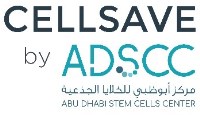 CellSave by ADSCC is one of the newest laboratories in UAE but it makes CellSave the first UAE bank to operate in more than one emirate. CellSave by ADSCC is the first family bank established in the emirate of Abu Dhabi, launched in 2024. It is a partnership between CellSave and the Abu Dhabi Stem Cell Center, the UAE’s leading center for stem cell research.
CellSave by ADSCC is one of the newest laboratories in UAE but it makes CellSave the first UAE bank to operate in more than one emirate. CellSave by ADSCC is the first family bank established in the emirate of Abu Dhabi, launched in 2024. It is a partnership between CellSave and the Abu Dhabi Stem Cell Center, the UAE’s leading center for stem cell research.
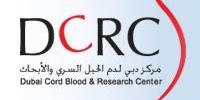 Dubai Cord Blood & Research Center (DCRC) is the second-oldest cord blood bank in the UAE. DCRC was established in 2006 by the Dubai Health Authority to collect public donations. In 2014 the DCRC began to offer family banking, and later they stopped public banking. The DCRC is based next to Latifah hospital, and presumably only serves that one location since they do not advertise.
Dubai Cord Blood & Research Center (DCRC) is the second-oldest cord blood bank in the UAE. DCRC was established in 2006 by the Dubai Health Authority to collect public donations. In 2014 the DCRC began to offer family banking, and later they stopped public banking. The DCRC is based next to Latifah hospital, and presumably only serves that one location since they do not advertise.
 There are three cord blood companies based in the UK which used to have marketing offices in Dubai, but which have complied with the UAE regulations by opening new laboratories in Dubai. In order of lab opening, the first is Cells4Life operating in Dubai as Medcells, the second is Smart Cells Middle East acting as a member of the Famicord Group, and the third is Future Health GCC.
There are three cord blood companies based in the UK which used to have marketing offices in Dubai, but which have complied with the UAE regulations by opening new laboratories in Dubai. In order of lab opening, the first is Cells4Life operating in Dubai as Medcells, the second is Smart Cells Middle East acting as a member of the Famicord Group, and the third is Future Health GCC.

These three UK-based companies with new laboratories are currently running neck and neck for the number two market position in Dubai. They all have the advantage of years of experience marketing in Dubai, giving them established relationships with hospitals and doctors. These three banks have a lot in common, creating a challenge to differentiate themselves in the eyes of potential clients.
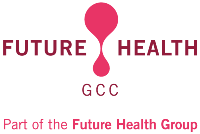 They all offer a suite of perinatal banking services, starting with cord blood banking and continuing to packages that include birth tissue from the umbilical cord and placenta. Their laboratories are all located in Dubai Healthcare City. Each of these banks is using their Dubai laboratory as a hub to market cord blood services to other Gulf nations. Here are some of the discriminators between these banks: MedCells offers cord blood processing with the Cells4Life proprietary TotiCyte method. The parent company of Smart Cells Middle East, Famicord Group, has the most therapies released. Future Health GCC is the only Gulf bank offering exosome storage.
They all offer a suite of perinatal banking services, starting with cord blood banking and continuing to packages that include birth tissue from the umbilical cord and placenta. Their laboratories are all located in Dubai Healthcare City. Each of these banks is using their Dubai laboratory as a hub to market cord blood services to other Gulf nations. Here are some of the discriminators between these banks: MedCells offers cord blood processing with the Cells4Life proprietary TotiCyte method. The parent company of Smart Cells Middle East, Famicord Group, has the most therapies released. Future Health GCC is the only Gulf bank offering exosome storage.
 First Stem Cell and Genomics Laboratory (FSG) is one of the recently built cord blood laboratories in Dubai. They started out as the Hortman Stem Cell Laboratory, a subsidiary of the Hortman Clinic for aesthetics. Their laboratory is located on the artificial island of Palm Jumeirah. Since 2023, they have sponsored an annual conference called the Dubai Stem Cell Congress. Then, with new financial support and a name change in early 2025, FSG has been able to launch its vision to offer both public and private cord blood banking throughout Dubai. The laboratory hosts cGMP clean rooms that can be used to manufacture cellular therapies. It also has state-of-the-art equipment for in-house genomics testing, including NIPS, PGS, Real-Time PCR, and Next-Generation Sequencing.
First Stem Cell and Genomics Laboratory (FSG) is one of the recently built cord blood laboratories in Dubai. They started out as the Hortman Stem Cell Laboratory, a subsidiary of the Hortman Clinic for aesthetics. Their laboratory is located on the artificial island of Palm Jumeirah. Since 2023, they have sponsored an annual conference called the Dubai Stem Cell Congress. Then, with new financial support and a name change in early 2025, FSG has been able to launch its vision to offer both public and private cord blood banking throughout Dubai. The laboratory hosts cGMP clean rooms that can be used to manufacture cellular therapies. It also has state-of-the-art equipment for in-house genomics testing, including NIPS, PGS, Real-Time PCR, and Next-Generation Sequencing.
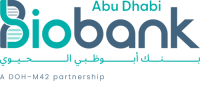 Abu Dhabi Biobank is the latest cord blood endeavor in the UAE. It will be a public cord blood bank that will collect donations in Abu Dhabi. The Abu Dhabi Biobank is an ambitious project in which cord blood banking will be one part of a broader “pan human” collection of cells, tissues, and genetics. It is funded through a partnership between the Department of Health of Abu Dhabi and M42, where M42 is the healthcare division of the Chinese technology company G42. Media reports indicate that G42 has invested heavily in projects in multiple sectors of the UAE5. The Abu Dhabi biobank will be housed in a building that is being constructed by G42 in the Masdar City technology center.
Abu Dhabi Biobank is the latest cord blood endeavor in the UAE. It will be a public cord blood bank that will collect donations in Abu Dhabi. The Abu Dhabi Biobank is an ambitious project in which cord blood banking will be one part of a broader “pan human” collection of cells, tissues, and genetics. It is funded through a partnership between the Department of Health of Abu Dhabi and M42, where M42 is the healthcare division of the Chinese technology company G42. Media reports indicate that G42 has invested heavily in projects in multiple sectors of the UAE5. The Abu Dhabi biobank will be housed in a building that is being constructed by G42 in the Masdar City technology center.
Given the amount of biobanking in the UAE, readers should know that stem cell transplants only recently became available in this country. In the past, health insurance plans for UAE residents would cover the cost for patients to travel to another country to receive a stem cell transplant. The first stem cell transplant in the UAE was performed in July 2020, and as of 2024 there are three centers offering this treatment: the Abu Dhabi Stem Cell Center (ADSCC), the Burjeel Medical City (BMC) that is also in Abu Dhabi, and the American Hospital in Dubai6. To date, all stem cell transplants performed in UAE have used adult donors and there has not been a single cord blood transplant in the UAE6.
The UAE is a strange regulatory environment where some things are tightly controlled and in other areas anything goes. On the one hand, the UAE prohibits many behaviors in public, including democratic protest, and has strict requirements for keeping cars clean7,8. On the other hand, the UAE has a reputation as a haven for international money laundering9. As applied to cord blood banking, one of the biggest problems is that the UAE does not have any truth in advertising laws. Hence, every cord blood bank in the UAE is advertising that they are the “first” and the “largest” bank in the country. It is downright funny to see so many brand-new laboratories claiming that they are the first bank, when the UAE has had cord blood banking since 2006, but there is no legal process to stop these claims. Another issue is that some cord blood companies are flouting the regulations that do exist. Even though it is illegal for a company to collect cord blood and get it processed by a third-party laboratory, at least one Indian company is marketing this service to the Indian community in Dubai.
During interviews for this article, one cord blood banker said “the Dubai market is definitely saturated, but the Ministry of Health got their 10 million per lab, so they don’t care”. In order for the multiple cord blood banks in UAE to survive, they need to mount education campaigns that will convince those parents that can afford cord blood banking that they should purchase this form of biologic insurance. An increase in penetration from 4% to 20% of births would help all the banks in the market. Patient testimonials often convince parents to bank cord blood. It would help if the medical community in Dubai ran clinical trials with cord blood (this has started) and if hospitals started using cord blood for stem cell transplants. Also, the numerous banks need to differentiate themselves from each other. This can be done by setting up unique service options and by partnering more closely with stem cell clinics that offer therapy with perinatal cells. The market for medical tourism, including regenerative medicine, is very strong in the UAE1. Parent’s Guide to Cord Blood Foundation believes the new laboratories in UAE can all survive if they invest in therapeutic applications, which will become the rising tide that floats all boats.
References
- Bapat A. Regenerative Medicine Regulations in the UAE. Parent's Guide to Cord Blood Foundation Newsletter Published 2022-08
- Global Media Insights. United Arab Emirates Population Statistics 2024. Blog. Published 2024-09-03
- Global Finance. Richest Countries in the World 2024. Data. Published 2024-05-03
- Crupi A, Schiliro D. The UAE Economy and the Path to Diversification and Innovation. IJBMER 2023; 14(5):2286-2300.
- Mazzetti M, and Wong E. Inside U.S. Efforts to Untangle an A.I. Giant’s Ties to China. New York Times. Published 2023-11-27
- Al-Shamsi H, Abyad AM, Kandy ZAK, George B, Dar-Yahya M, Kaloyannidis P, El-Saddik A, Rana S, Khalil C. Hematopoietic Stem Cell Transplantation (HSCT) in the UAE. 2024; p.611-624. Chapter in: Al-Shamsi, H.O. (eds) Cancer Care in the United Arab Emirates. Springer, Singapore.
- Ali S. 11 Unusual Dubai Laws for Tourists and Residents. Culture Trip. Published 2024-09-25
- US Dept. of State. 2022 Country Reports on Human Rights Practices: United Arab Emirates. 2022 Report.
- Organized Crime and Corruption Reporting Project. How Dirty Money Finds a Home in Dubai Real Estate. Dubai Unlocked. Published 2024-05-14


